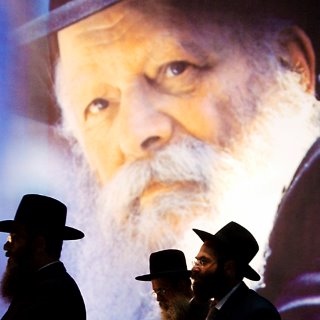click to dowload our latest edition
CLICK HERE TO SUBSCRIBE TO OUR NEWSLETTER


Published
7 years agoon
By
adminJONATHAN SACKS
A great leader died and the Jewish world has become a smaller place. History will chart the achievements of the seventh Lubavitcher Rebbe, Rabbi Menachem Mendel Schneerson. My own tribute is simple. This was a man who changed the religious landscape of Jewish life.
We first met in 1968. I was an undergraduate, visiting American Jewry to seek out its intellectual leaders. They were impressive. But my encounter with the Rebbe was unique. In every other case, I asked questions and received answers.
The Lubavitcher Rebbe alone turned the interview around and began asking me questions. What was I doing for Jewish life in Cambridge? What was I doing to promote Jewish identity among my fellow students?
The challenge was personal and unmistakable. I then realised that what was remarkable about the Rebbe was the exact opposite of what was usually attributed to him. This was not a man who was interested in creating followers. Instead, this was a man who was passionate about creating leaders.
He himself was a leader on a heroic scale. Chosen to succeed his late father-in-law, Rabbi Yosef Yitzchak Schneerson, as head of Lubavitch in 1950, he set about reconstructing the movement in the inhospitable climate of secular America.
At that time it was widely believed that Orthodoxy had no future in the United States. No one had yet found a way to make traditional Judaism a living presence in an America called the treifa medina.
Like all classic rabbinic leaders, the Rebbe began with education, creating a network of schools and yeshivot. Then he took the decision that was to change the face of Lubavitch and ultimately the Jewish world.
He sent his followers out to places and communities which had never known a Chasidic presence. He began with university campuses. Already, in the early 1950s, Lubavitchers could be found working with Jewish students, telling Chasidic stories, singing songs and introducing them to the hitherto remote world of Jewish mysticism.
It was an extraordinary move, nothing less than the reinvention of the early days of the Chasidic movement when, in the 18th century, followers of the Baal Shem Tov had travelled from village to village taking with them the message of piety and faith.
Chasidism had proved to be the most effective way of protecting Judaism against the inroads of secularisation. But it was limited in its impact to Eastern Europe. Nothing was less likely than that a strategy from the Old World could succeed in the new. But it did. Drawn by its warmth, intrigued by its depth, hitherto assimilated Jews were attracted to Lubavitch and, on meeting the Rebbe, became his disciples.
The second decision was even more remarkable. Though the faith that drove the Rebbe was traditional, the environment to which it was addressed was not. Earlier and more profoundly than any other Jewish leader, he realised that modern communications were transforming the world into a global village.
Religious leadership could now be exercised on a scale impossible before. The Rebbe began sending emissaries throughout the Jewish world, most notably and covertly in Russia. The movement was unified through his regular addresses, communicated through a series of mitzvah campaigns. Few international organisations can have been more tightly led by a single individual on the most slender resources.
It would be hard to find a historical precedent for this massive effort to reignite the flame of Judaism in a secular world. If today we are familiar with the phenomena of baalei teshuvah (religious returnees) and Jewish outreach, it is almost entirely due to the pioneering work by Lubavitch, since adopted by many other groups within Orthodoxy.
The Rebbe was preoccupied by the challenge of religious leadership. In a conversation we had in 1978, he expressed his concern at the shortage of rabbis throughout the Diaspora, and at the failure of yeshivot to direct their alumni to congregational work.
He encouraged me to enter the rabbinate and to train other rabbis and was particularly supportive of the work of Jews’ College. He himself turned his followers into leaders at the earliest possible age and, if the decision to empower youth exposed Lubavitch to risks, it also gave it a vigour and energy that were to be found nowhere else in the religious world.
Behind all this activity lay a compelling vision, never formally articulated but clear nonetheless. The Jewish world, particularly the Europe from which he came, had been devastated by the Holocaust.
In the aftermath, one thing had happened but another thing had not. Jews had returned to the Land of Israel. But they had not returned to the faith of Israel.
In Judaism, physical and spiritual return, are inseparable. In the modern world they had become separated. This was the fracture he sought to mend. Where others devoted themselves to building the Jewish State, he dedicated himself to rebuilding the inner state of Jews.
The Rebbe himself was tireless in drawing connections between contemporary events and the Torah portion of the week.
His followers will not miss the significance of the fact that he died at the beginning of the week of Hukkat, the Torah reading which records the poignant decree that Moses would die before leading his people into the promised land.
As Israel was to Moses, so the messianic age has been to Judaism’s greatest leaders: a destination journeyed towards, glimpsed from afar but not yet reached.
Others will argue about the Rebbe’s controversial stances on the great Jewish issues of our time.
I simply mourn the loss of a commanding intellect, a majestic presence, a man of spiritual fire and personal warmth, one of the very few in history whose influence was felt throughout the Jewish world, the man who turned Judaism outward and dedicated his life to bringing to post-Holocaust humanity the living presence of G-d.
